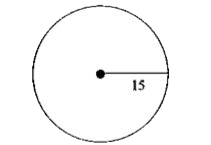What must be the minimum coefficient of friction μ between the tyres of the drive wheels of a car and the road, if the car and the road, if the car of mass m=2 tons and load M=4 tons, has an acceleration a=0.2ms−2 ? Consider the problem for two cases : (a) all the wheels are driven , (b) only the rear wheels are driven. Assume that the centre of gravity of the car lies at the mid-point between the axes of the wheel and the centre of gravity of the load above the rear axle.
Step by step video & image solution for What must be the minimum coefficient of friction mu between the tyres of the drive wheels of a car and the road, if the car and the road, if the car of mass m=2 tons and load M=4 tons, has an acceleration a=0.2 ms^(-2) ? Consider the problem for two cases : (a) all the wheels are driven , (b) only the rear wheels are driven. Assume that the centre of gravity of the car lies at the mid-point between the axes of the wheel and the centre of gravity of the load above the rear axle. by Physics experts to help you in doubts & scoring excellent marks in Class 11 exams.
Topper's Solved these Questions
- BOOK - NN GHOSHCHAPTER - FRICTION, WORK POWER AND ENERGYEXERCISE - Exercises (A)15videos
FRICTION, WORK POWER AND ENERGY
- BOOK - NN GHOSHCHAPTER - FRICTION, WORK POWER AND ENERGYEXERCISE - Exercises (B)36videos
FRICTION, WORK POWER AND ENERGY
- BOOK - NN GHOSHCHAPTER - FIRST LAW OF THERMODYNAMICSEXERCISE - All Questions39videos
FIRST LAW OF THERMODYNAMICS
- BOOK - NN GHOSHCHAPTER - GRAVITATIONEXERCISE - EXERCISE29videos
GRAVITATION
Similar Questions
What should be the coefficient of friction between the tyres and the road, when a car travelling at 60kmh−1 makes a level turn of radius 40m ?
View SolutionThe coefficient of friction between the ground and the wheels of a car between the ground and the wheels of acar moving on a horizontal road is 0.5 If the car starts from rest , what is the minimum distance in which it can acquire a speed of 72km/h ? take g=10ms−2 .
View Solution
Knowledge Check
- Question 1 - Select One
If μ is the coefficient of friction between the tyres and road then the least stopping distance for a car of mass m moving with velocity v is
Av2/2μgBv/2μgC2v/μ2gD2v/μg - Question 2 - Select One
The coefficient of friction between the tyres and the road is 0.25. The maximum speed with which a car can be driven round a curve of radius 40 m without skidding is (assume g=10ms−2)
A40ms−1B20ms−1C15ms−1D10ms−1 - Question 3 - Select One
The coefficient of friction between the tyres and the road is 0.25. The maximum speed with which a car can be driven round a curve of radius 40 m without skidding is (Take g=10ms−2)
A40ms−1B20ms−1C15ms−1D10ms−1
The radius of a car wheels is 15 units

What is the area of the wheel?View SolutionThe coefficient of friction between a car wheels and a roadway is 0.5 The least distance in which the car can accelerate from rest to a speed of 72 kmph is (g=10ms−2)
View SolutionA car starts from rest on a 1600m long bridge. The coefficient of friction between the tyre and road is 0.8. The minimum time taken by the car to cross the bridge is
View SolutionA car starts from rest to cover a distance s. the coefficient of friction between the road and the tyres is μ. The minimum time in which the car can cover the distance is proportional to
View SolutionIn rear wheel drive cars the engine rotastes the rear whel and the front wheels rotates only becomes the car moves. Ilf such a car accelerates on horizontal road the friction
View Solution

